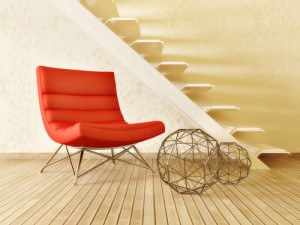Regardless if you live in a house, in an apartment, or in a dorm room, the fact is that you’ll need furniture to provide you with a place to sit, eat, sleep and even and store your belongs. While everybody agrees that the furniture in your home should be a reflection of your persona, few people realize that, many times, such reflection of style and personality comes with a hidden price tag that will affect your health.
Generally speaking, conventional furniture comes with a large amount of chemicals that will compromise the indoor air quality of your home and affect your health buy causing allergies, headaches, and nausea, among other things. However, for every problem there is a solution and in this case, the solution is simple: next time you are shopping for furniture, look for pieces that are environmentally friendly. Below is our quick guide to assist you when shopping for seats and stools for your home:
Know where your furniture is coming from. Is it made and assembled in the USA or elsewhere? Many times you will find goodies that were assembled in the USA but the actual components were manufactured elsewhere. Knowing its origin helps you to have a better idea of the furniture quality as certain countries have very little to no standards when it comes to durability and sustainability. In US look for furniture that carries either FSC or GreenGuard certification.
Prefer Wood Furniture — Whenever possible, choose solid wood furniture over pressed wood products as most of those “wood” like furnishings are made from particleboard, plywood or medium-density fiberboard (MDF) and they use formaldehyde. Formaldehyde is a colorless gas that can cause eye, nose and throat irritation; wheezing and coughing; fatigue; skin rash; and severe allergic reactions. Furthermore, formaldehyde has also been linked to cause cancer in animals and, according to the World Health Organization, is classified as a human carcinogen. Another benefit of choosing solid wood products is that, as the years pass by, you don’t need to replace your furniture.
Look at the finish — When selecting wood furniture, you should look for furniture with finishes that are low-VOC and either water or wax based. If your furniture already comes finished and you are concerned about the chemicals used, look at AFM Safecoat website as they make several sealants specifically designed to reduce indoor air pollution and, depending on your skill level, you can always buy unfinished wood pieces and apply your very own nontoxic wood finish or paint.
Choosing the right upholstery – This is probably the hardest thing to do as most of the fabrics available for purchase carry some chemicals that are bad for our health and also for the environment. Items such as pillows, cushions and padding are usually made from polyurethane which is petroleum intensive product that breaks down over time and emits fine particles of chemical dust. Furniture that was made before 2005, might also have polybrominated diphenyl ethers (PBDEs) on the foam. PBDE is a toxic class of fire-retardant chemicals that accumulate in people and can disrupt thyroid hormone levels as well as to contribute to slow brain development. Even thou the type of PBDE used in foam products were pulled from the U.S. market in 2004, it’s still wise to ask manufacturers what type of fire retardants they use and avoid products with brominated fire retardants (the group PBDEs belong to). Furthermore, polyester, rayon and other common synthetic upholstery textiles are made with nonrenewable resources, and the manufacturing process often involves the use of carcinogenic chemicals such as benzene, toluene, arsenic and heavy metals. Next time you are shopping for upholstered furniture, look for natural, untreated fabrics such as organic cotton, linen, wool, hemp or silk.
Look for furniture that is designed for durability and/or upgradeability. Seating goodies that are designed to provide prolonged use, based on either improved durability or upgradeability, will result in reduced resource use or reduced waste. Seating goodies that offer different seating options is a good example. Happy shopping!

